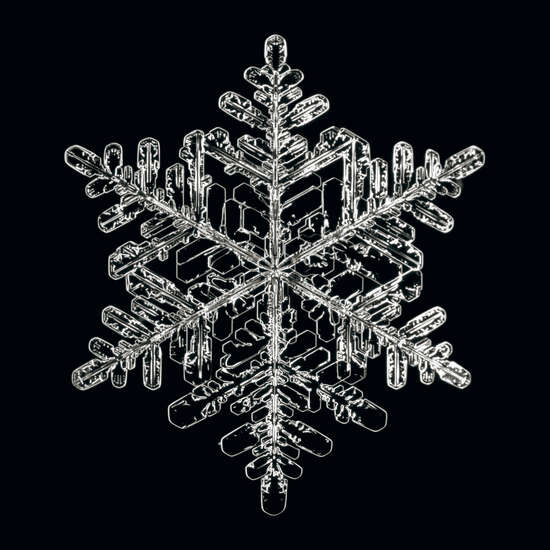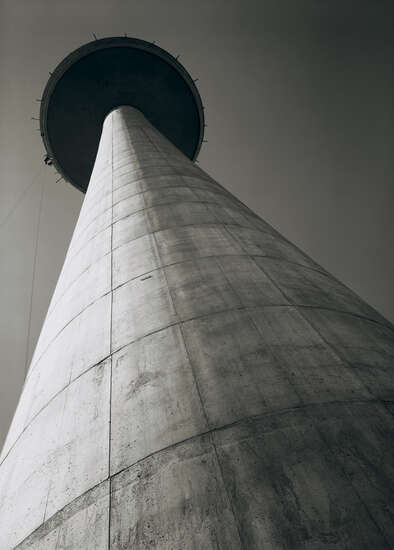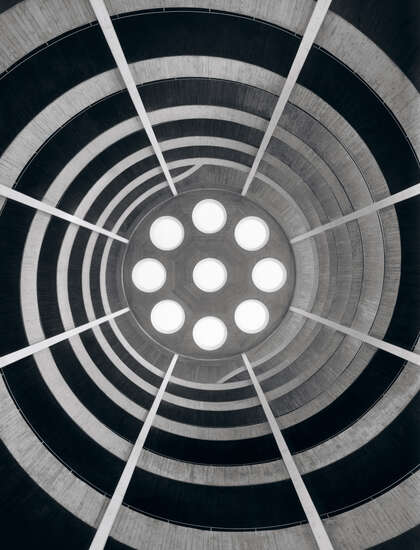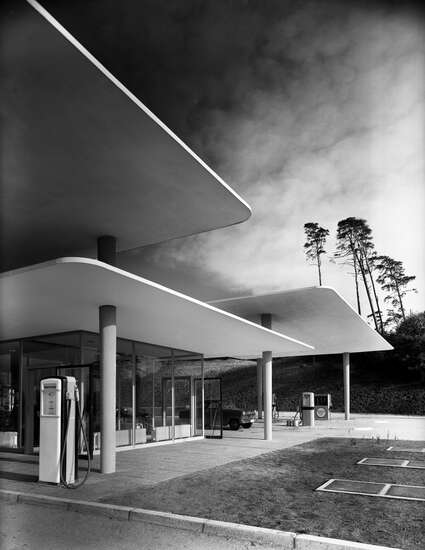READY TO HANG
Out of the box, all LUMAS artworks are ready and easy to hang.
SECURELY PACKAGED
LUMAS works are always packed to the highest standard to make sure it arrives as perfectly as it leaves us.
ARTIST SUPPORTED
Your purchase supports the free and independent work of your favorite artist.
14 DAY RETURNS
Easy 14 day returns to make sure you are satisfied with every purchase.
BACKGROUND INFORMATION
DRESS OF LIGHT
In the late 1940s, Heinrich Heidersberger shot his iconic nude series Kleid aus Licht (German for “Dress of Light”) for the magazine Stern, which Henri Nannen had recently founded. This series – which caused outrage in prim post-war Germany – is now viewed as one of the classics of photographic art.
The idea was as simple as it was spectacular: Using a projector he fashioned out of a cooking pot, he covered naked bodies with spots and stripes of light. In doing so, he combined nude photography and experimental photography in ways never seen before. Heidersberger’s “dresses” of light reveal, above all, the photographer’s passion for the phenomenon of light, a theme he explores further in his later work, Rhythmographien (“Rhythmographies”). Heidersberger came to photography by chance. In 1928 he moved to Paris to study painting with Fernand Léger. Walking through a flea market, he stumbled across an old wooden camera. It was, as he says, “a sign from fate”.
Marc Peschke
Heinrich Heidersberger , who died in 2006 at the age of 100, has his place among the most important German photographers of the second half of the 20th century. Seminal images in the fields of architecture and advertising mark his complex life’s work, and his name as an artist is of great repute as well. An exceptional photographer of the modernist aesthetic, Heinrich Heidersberger knew exactly how to combine the documentary approach of photography with modernist ideas. In his photographs he combines function and visual aesthetics, incorporating economic, technical, and social aspects into his perfectly balanced pictures. The aesthetic ideas of modernism were influenced by the notion of structure. Heidersberger’s photographs open our understanding of these structural laws in a surprising and creative way. In his photographs of post-war architecture of the fifties Heidersberger revealed the aesthetics of modernism, thus presenting them as an interplay of structure and form. Heidersberger’s images have retained their importance in photography, in spite of all of the visual styles and trends that have developed over the last decades.VITA
1906 Born in Ingolstadt, Germany 1928-1931 Attended Fernand Léger’s art school while in Paris, began working in photography, met Piet Mondrian and Yves Tanguy 1946 Began working as a photojournalist, advertising and architectural photographer in Berlin 1957 Opened a studio in Brunswick, Germany, started working as a photojournalist for Stern 1961 Moved to Wolfsburg, founded the artist’s group “Schloßstraße 8” 2006 Passed away in Wolfsburg, Germany Exhibitions
Solo Exhibitions
2017 Das zweite Auge - Rollei und die Braunschweiger Fotoindustrie, Städtisches Museum Braunschweig, Germany
Heinrich Heidersberger - Face to the World, Toyohashi City Museum of Art & History, Toyohashi, Japan
Ägyptische Komödie, Marionettentheater by Harro Siegel2016 MS Atlantic, auf einem Kreuzfahrtschiff der MS Europa 2 2015 PиTMOгPAMи, Museum für Wisschenschaft und Technik, Belgrad, Serbia
Ritmogrami, Technisches Museum Zagreb, Kroatien2014 Heidersberger. Rhythmogramme - das gestimmte Bild, Petra Rietz Salon Galerie, Berlin, Germany 2012 ARRIVARE/ Wolfsburg - Bilder einer jungen Stadt, St. Johannes-Evangelist-Kirche, Berlin, Germany
MS Atlantic, Petra Rietz Salon Galerie, Berlin, Germany2011 MS Atlantic, Galerie Kunstgut Hamburg, Germany 2008 Kunstmuseum Wolfsburg, Germany
Heidersberger: Rückkehr zum Aufbruch. Fotografien 1949 bis 1973, Volkswagenwerk Wolfsburg, Germany2007 Ästhetik der Moderne. Photographien von Heinrich Heidersberger, Museum für Konkrete Kunst, Ingolstadt, Germany
Altana Galerie, Technische Universität Dresden, Germany2006 Heidersberger Einhundert, Städtische Galerie Wolfsburg, Germany
Kunstverein Wolfsburg, Germany
Museum für Photographie, Braunschweig, Germany
Vertretung des Landes Niedersachsen beim Bund in Berlin, Germany
Lentos Kunstmuseum, Linz, Austria
InFocus Galerie, Cologne, Germany
Autostadt, Wolfsburg, Germany2002 Kultur unterm Schirm, Kirchentellinsfurt, Germany 2001 Architektenkammer Niedersachsen, Hannover, Germany
Galerie InFocus, Cologne, Germany
Medienwerkstatt des Caspar-David-Friedrich-Instituts der Ernst-Moritz-Arndt-Universität Greifswald, Germany2000 Heinrich Heidersberger Architekturphotographie 1952-72, Stadtmuseum Wolfsburg, Germany 1999 Galerie für Fotografie - Georg Eichinger, Berlin, Germany 1997 Die Rhythmogramme, Kunstverein Gifhorn, Germany
Die Rhythmogramme, Museum für Konkrete Kunst, Ingolstadt, Germany1996 Deutsch-Dänische Gesellschaft, Bad Harzburg, Germany
Städtische Galerie Wolfsburg, Germany
Fotozentrum Zimmermann, Hannover, Germany1995 Galerie Wendelin Niedlich, Stuttgart, Germany 1992 Museum für Photographie, Braunschweig, Germany 1990 Stadt- und Lichtbildgalerie, Ingolstadt, Germany 1989 Center for Creative Photography, Tucson University, Arizona, United States 1987 Danmarks Fotomuseum, Herning, Denmark
Neue Galerie der Stadt Linz, Austria1986 Kunstverein Wolfsburg, Germany 1982 Stadt- und Lichtbildgalerie Ingolstadt, Germany 1972 Olympisches Dorf Munich, Haus Wolfsburg, Germany 1971 Städtische Galerie Wolfsburg, Germany 1967 Galerie Clarissa, Hannover, Germany 1966 Tonbildschau für Jenaer Glas in Frankfurt, Germany
Heidersberger fotografier, Museet for Fotografi, Viborg, Denmark1962 Städtische Galerie Wolfsburg, Germany
Neue Galerie der Stadt Linz, Austria1956 Die Neue Sammlung, Munich, Germany 1946 Kunstverein Braunschweig, Germany Group Exhibitions
2017 Städtisches Museum Braunschweig 2016 Thinking about Algorithms, Galarie Scheublein + Bak, Zurich, Switzerland
Heidersberger & Heidersberger, Culture Matters Galarie, Hannover, Germany
Sommersalon 2016, Holthoff Mokross Galerie, Hamburg, Germany
Wolfsburg Unlimited - Eine Stadt als Wetllabor, Kunstmuseum Wolfsburg, Germany2015 Lichtbild und Datenbild - Spuren Konkreter Fotografie, Museum Kunstspeicher, Würzburg, Germany
Augen auf! - 100 Jahre Leica Fotografie, Hamburg, Frankfurt, Berlin, Wien und Munich, Germany
ParisPhoto, Galerie Scheublein & Bak, Zurich, Switzerland
Hans Arp. Der Nabel der Avantgarde, Georg Kolbe Museum Berlin, Germany
Inszenierung des Fortschritts, Vintage Computing Festival, Berlin, Germany
Konkrete Kunst, Kunstverein Bad Nauheim2014 Media Scape Biennale, Rijeka, Kroatien 2013 CONCRETE - Fotografie und Architektur, Fotomuseum Winterthur, Switzerland 2010 Mirkrofografie - Schönheit jenseits des Sichtbaren, Museum für Fotografie, Fotografie der Kunstbibliothek 2009 Wolfsburg Research, Emirates Fine Art Society, Sharjah, United Arab Emirates 2006 ArchiSculpture, Kunstmuseum Wolfsburg, Germany 2005 Zentrum für Kunst und Medientechnologie, Karlsruhe, Germany
Institut für Auslandsbeziehungen, Stuttgart, Germany
Zwei deutsche Architekturen, several cities, Germany2001 Abstrakte Fotografie, Kunsthalle Bielefeld, Germany 1998 The Museum of Modern Art, New York City, United States 1997 Wolfsburg und Eisenhüttenstadt, Deutsches Historisches Museum, Berlin, Germany 1996 Goethe-Institut Paris, Deutsche Gesellschaft für Photographie, Paris, France 1989 Das Foto als autonomes Bild, Kunsthalle Bielefeld, Germany
Das Foto als autonomes Bild, Bayerische Akademie der Künste, Munich, Germany1984 Image et Imaginaires d´Architecture, Centre Pompidou, Paris, France
The Photographers Gallery, London, United Kingdom







